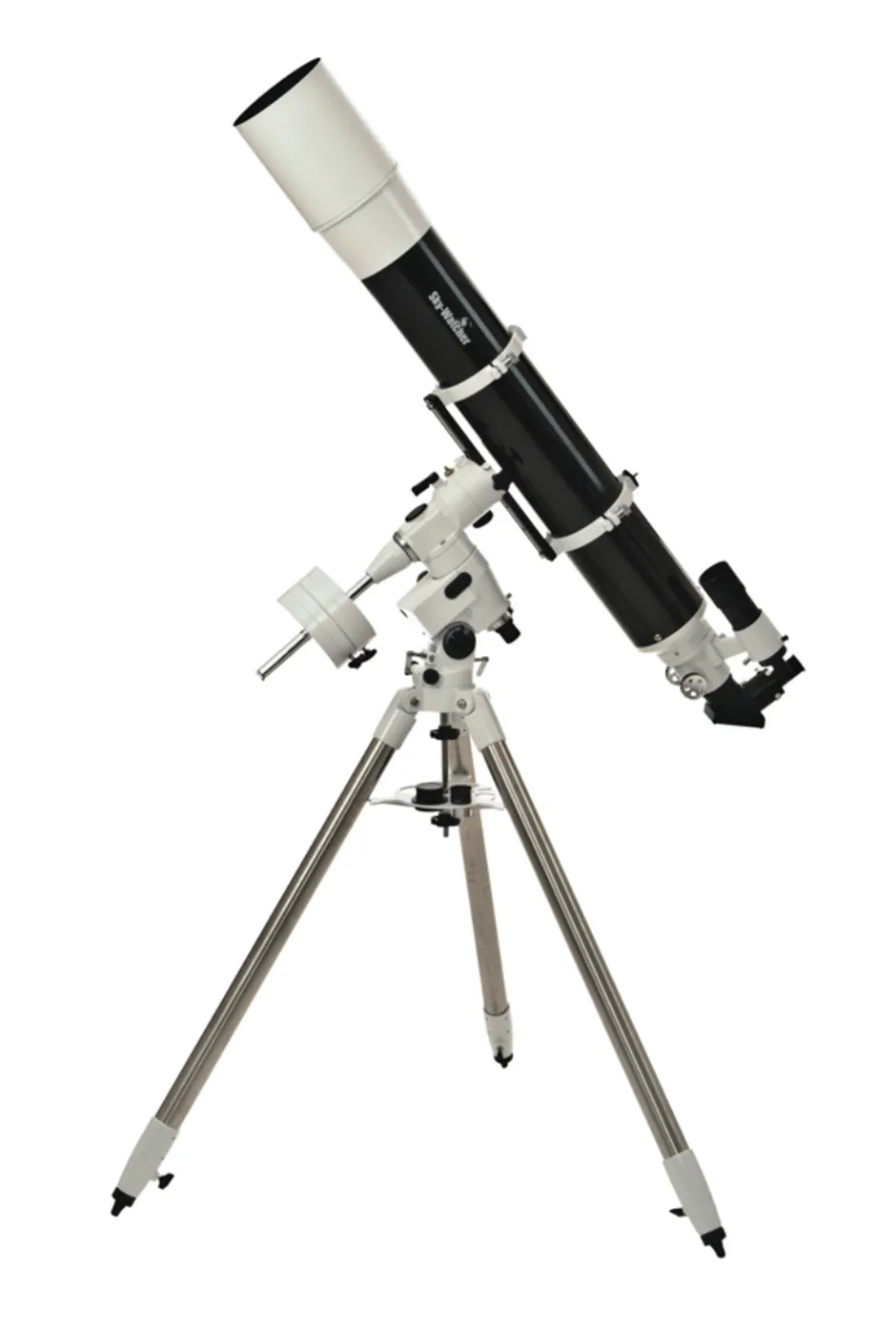Price: £728.00
Aperture: 150mm
Focal Length: 1,200mm; f/8
Eyepieces: 25mm, 10mm, 2x Barlow; 1.25-inch fit
Finderscope: 9x50
Mount: EQ5 Deluxe equatorial
Weight: 24kg
Supplier: Optical Vision Ltd
Telephone: 01359 244200
Website: www.opticalvision.co.uk
The Evostar-150 looks sleek in its flecked black livery and white EQ5 Deluxe mount.
It is supplied with a nice 9x50 finderscope, two eyepieces – 25mm and 10mm (both 1.25-inch fit), a 2x Barlow and a 2-inch star diagonal that can also take 1.25-inch eyepieces.
The EQ5 mount is well built and easily carries the tube assembly thanks to the tubular steel legs of the tripod.
The system also comes with a polarscope included as standard.
The short slow-motion control knobs for the RA and Dec. axes were not the best choice with a telescope tube this long.
We often found it difficult to stretch far enough to reach them when adjusting the telescope.
However, fine adjustment was pleasantly smooth and there was hardly any play in either axis.
With the star Procyon high in the sky we checked the field of view with the supplied 25mm eyepiece, finding it pin-sharp across 75 per cent with only slight distortion towards the field edge.
Using the Pleiades star cluster, we estimated the width of the view with the 25mm at just over a degree.
The double star 38 Gemini was clearly split with the 25mm and was a gorgeous sight using the 10mm.

Castor was also just split with the 25mm and quite good with the 10mm, but there was a slight blue halo round the bright stars – though not as wide a halo as we’ve seen in shorter-focus refractors.
The Evostar really comes into its own with planetary observation, as we discovered when we looked at Mars.
The Red Planet showed a small but clear disc at low magnification and we were very pleased with the amount of detail we could discern when we used the supplied 10mm eyepiece.
Mars had several dusky markings as well as a nice polar cap at this magnification, so we added the 2x Barlow.
Despite a slight yellow-orange halo to the planet as well as its normal red colour, the view was good and the detail was certainly there to see.
The Moon displayed lots of fine detail with both eyepieces and we really felt you could get lost exploring the craters along the terminator.
Deep-sky treats
Long focal length refractors tend to give fainter, more magnified, deep-sky views, but we found the galaxies M81 and M82 quite enjoyable, with subtle detail along the edge of M82 in particular.
The Orion Nebula was so detailed we got lost following tendrils of nebulosity, but most memorable was the quality of the view when we zoomed in on the Trapezium stars.
With the 10mm eyepiece and averted vision, we could see the two fainter, 11th-magnitude stars known as ‘E’ and ‘F’.
The Pleiades filled the view of the 25mm and the star cluster M35 in Gemini was a lovely sight.
The Evostar-150 certainly does a good job overall but is especially suited to planetary observation.
It’s a shame you need long arms to get to the controls; the addition of longer slow-motion control knobs would certainly improve this system.
